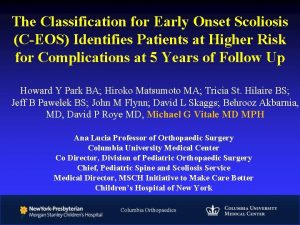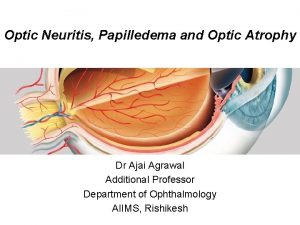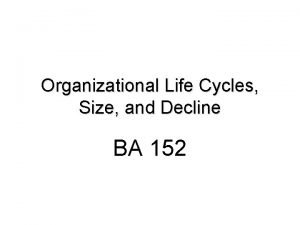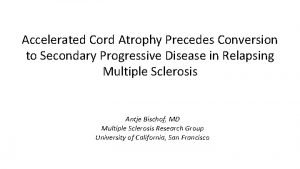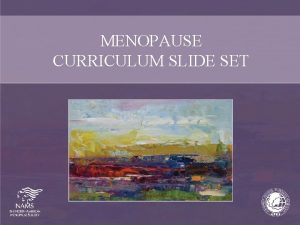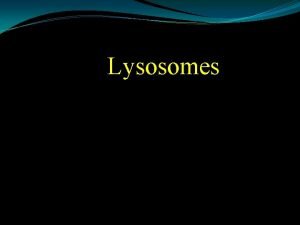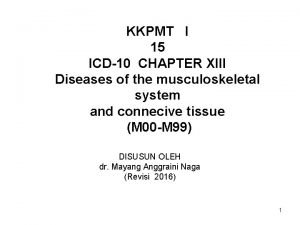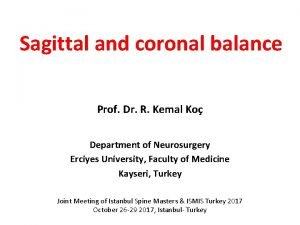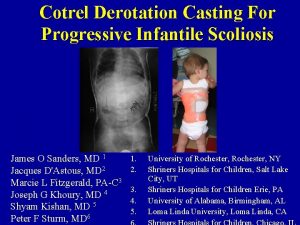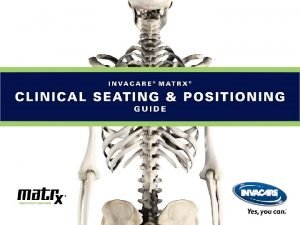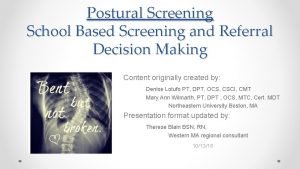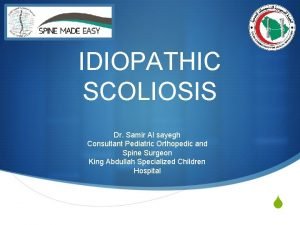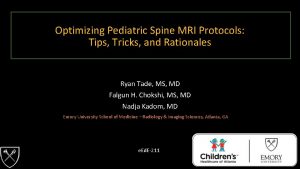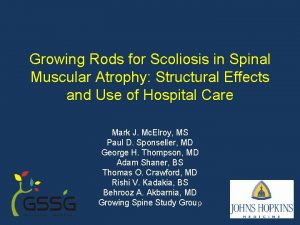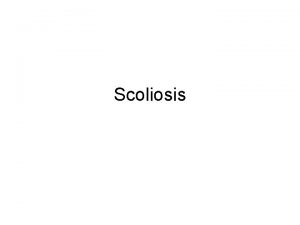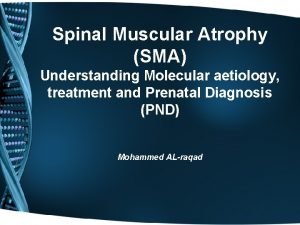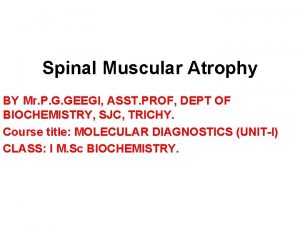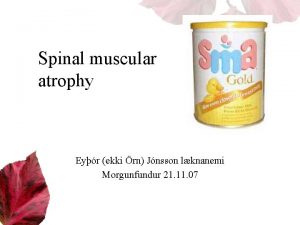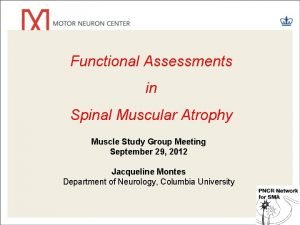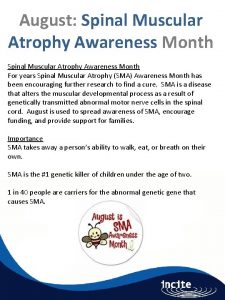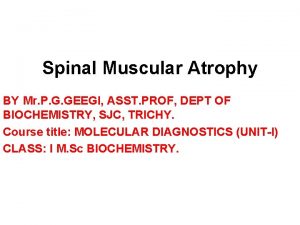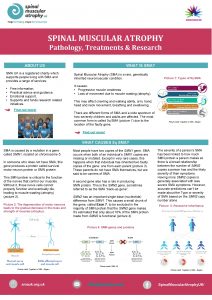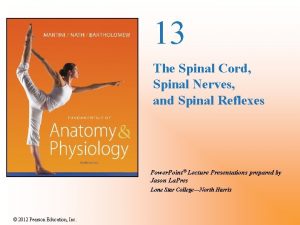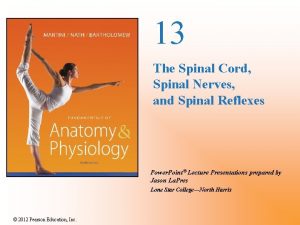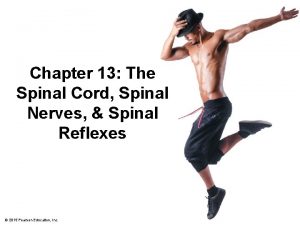Early Treatment of Scoliosis in Spinal Muscular Atrophy


























- Slides: 26

Early Treatment of Scoliosis in Spinal Muscular Atrophy David Spiegel, M. D. Jim Walker, C. O. Children’s Hospital of Philadelphia Presented at the June 2005 FSMA Conference

Outline • Terminology – Scoliosis, Kyphosis, Lordosis, pelvic obliquity • Alternatives for treatment of scoliosis in younger patients – “positional curve control” • Wheelchair modifications • Bracing – Surgery?

Front Side Cervical (Lordosis) Thoracic (Kyphosis) Lumbar (Lordosis)




Neuromuscular Curves


Pelvic Obliquity

Non- Structural: Does correct on bending x-rays Standing Left Bend


Structural: Does NOT correct on bending x-rays Standing Right Bend

Effects of Scoliosis • Pulmonary – Change in shape of chest cavity • Functional – Loss of sitting balance – Loss of upper extremity use


Scoliosis in Spinal Muscular Atrophy • • • Often diagnosed at 4 -6 years Most progress with time Overall goals of treatment – Straight spine over a level pelvis – Maximize comfort, positioning, and ease of care

Scoliosis in Spinal Muscular Atrophy • Short term goals – Slow progression, delay definitive treatment • Maximize lung growth, trunk height – Monitor curve magnitude and flexibility

Early Treatment • “Positional curve control” – Does not arrest curve progression – May delay curve progression • Surgery? – Spinal fusion – ‘’Growing rods” – VEPTR

“Positional Curve Control” • Wheelchair modifications • Bracing (soft spinal orthosis) • Goals – Improve function • Sitting balance, upper extremity use – Delay definitive treatment • Allow for trunk growth • Allow for lung growth

Lung Growth Most lung growth occurs very early— first 6 -8 years of life

Soft Spinal Orthosis • Challenges and Considerations – Pulmonary function – Curve rigidity • Skin integrity – G-tube • Casting method – Apply corrective forces

SOFT • Total contact –Improve comfort –Distribute pressure • Layering –Flexibility –Soft edges FIRM RIGID

• Crest Rolls –Control Brace Migration –Level the pelvis –Distract pelvis from rib cage


Surgical Curve Control Without Fusion • “Growing rod” • VEPTR • Roles to be determined…. .

Summary • Progressive curves in juveniles with SMA are a challenge • “Positional” curve control may improve function and buy time • Indications and results for “fusionless” surgery remain to be determined

 Early onset scoliosis classification
Early onset scoliosis classification Spinal cord layers
Spinal cord layers Art-labeling activity figure 13.6a (1 of 2)
Art-labeling activity figure 13.6a (1 of 2) Figure 13-1 the spinal cord
Figure 13-1 the spinal cord Exercise 15 spinal cord and spinal nerves
Exercise 15 spinal cord and spinal nerves Plyometrics disadvantages
Plyometrics disadvantages Dt56a side effects
Dt56a side effects Papilloedema
Papilloedema Ba 152
Ba 152 Inflammation
Inflammation Group atrophy
Group atrophy Atrophy
Atrophy Trophy suffix
Trophy suffix What is menopause
What is menopause Testicular atrophy
Testicular atrophy I cell disease
I cell disease Thoracogenic scoliosis of thoracolumbar region
Thoracogenic scoliosis of thoracolumbar region Scoliosis chiropractor seminole county
Scoliosis chiropractor seminole county Coronal balance scoliosis
Coronal balance scoliosis Derotation cast
Derotation cast Hyperextesion
Hyperextesion Infantile scoliosis casting
Infantile scoliosis casting Risser score scoliosis
Risser score scoliosis Scoliosis advisor
Scoliosis advisor X iceos
X iceos Mri scoliosis protocol
Mri scoliosis protocol Costodesis
Costodesis
